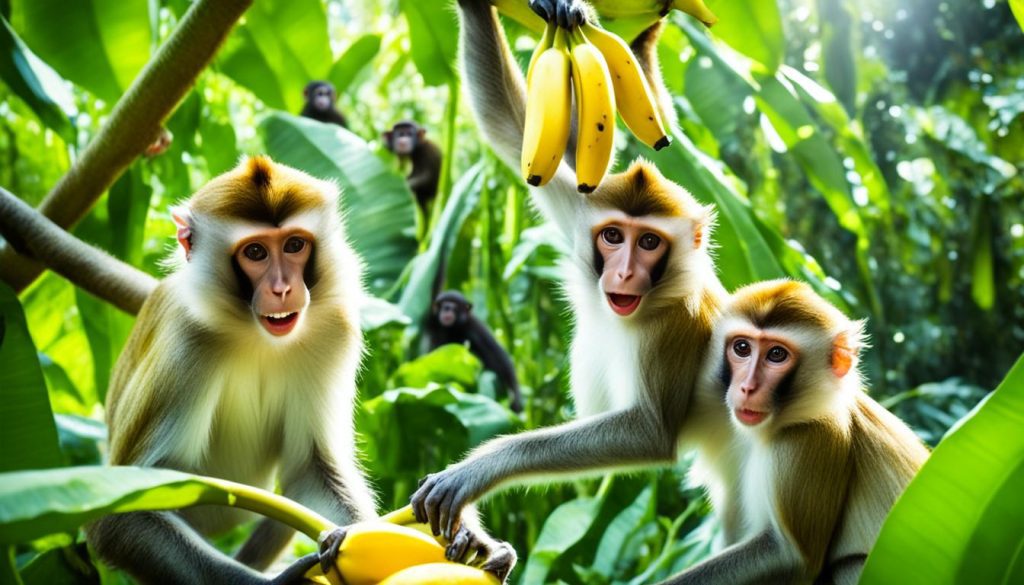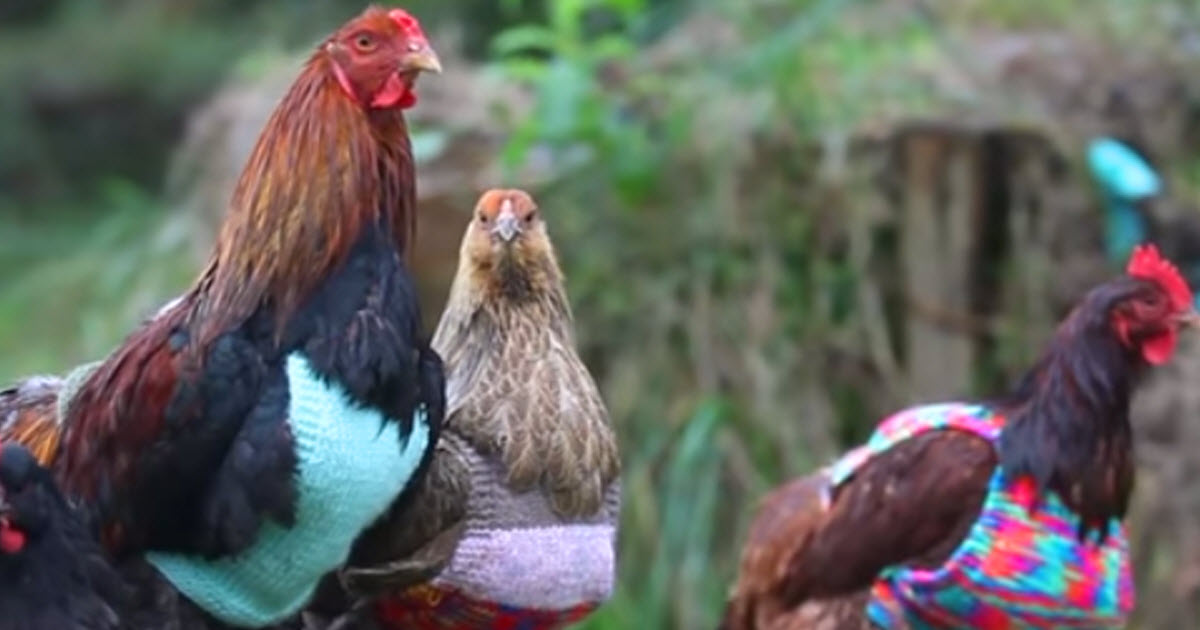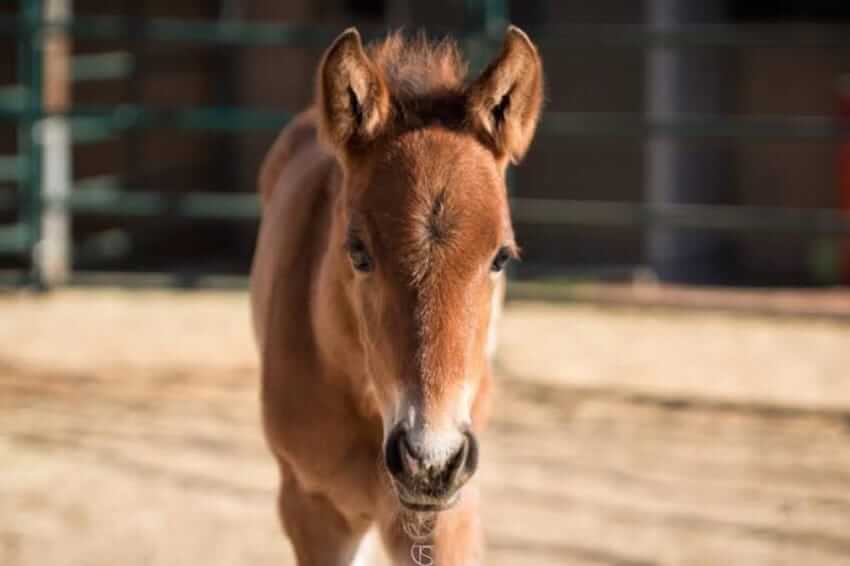As a curious animal lover, I have always wondered what monkeys eat and how their diets contribute to their overall well-being. In this article, we will delve into the fascinating world of monkey food habits, exploring the types of food they consume and their dietary preferences. Whether you’re a nature enthusiast or simply intrigued by these intelligent creatures, join me on this journey as we uncover the secrets of monkeys’ nutrition.
What Do Monkeys Eat?
- Monkeys are omnivores, meaning they eat both plants and meat.
- Fruits, nuts, seeds, eggs, lizards, animals, and insects are part of a monkey’s varied diet.
- Monkeys primarily consume fruits but also have a significant portion of their diet consisting of plants.
- Each monkey species has its own unique dietary preferences and adaptations.
- Understanding what monkeys eat is crucial for their conservation and overall well-being.
What Do Wild Monkeys Eat?
Wild monkeys have a diverse diet based on their habitat. Most monkeys are omnivores, consuming a combination of plants and meat. They have adapted to their environments and developed tastes for specific types of food sources. While the specific types of food they eat may vary depending on their surroundings, all monkeys generally have similar dietary preferences.
Monkeys in the wild consume a wide variety of foods to meet their nutritional needs. They incorporate fruits, leaves, seeds, nuts, flowers, vegetables, and insects into their diets. By consuming both plant and animal sources, monkeys are able to obtain the necessary nutrients for their well-being.
When foraging for food, wild monkeys rely on their instincts and knowledge of their environment to select suitable food sources. They have learned to identify edible plant species and recognize the availability of specific food items in different seasons. This adaptability ensures their survival and sustains their diverse dietary preferences.
The ability of monkeys to consume a variety of foods also plays a crucial role in maintaining a healthy ecosystem. They contribute to seed dispersal, helping to propagate plant species and support biodiversity.
To better understand the dietary preferences and habits of wild monkeys, researchers study their feeding behavior and analyze their poop (feces). This provides insights into the types of food they consume and helps in their conservation efforts.

Diet of Specific Monkey Species
Different species of monkeys have distinct dietary habits based on their natural instincts and adaptations. Understanding the specific types of food that various monkey species consume can provide valuable insights into their nutrition and feeding behaviors.
One example is the proboscis monkey, characterized by its large nose. These monkeys are selective about the fruits they eat and have a preference for unripe ones. This helps them prevent stomach swelling caused by fermentation gases.
Howler monkeys, on the other hand, are primarily folivores, meaning they mainly eat leaves. However, they also incorporate fruits and green vegetables into their diet.
Owl monkeys are frugivores and rely heavily on fruits such as figs, apples, and bananas. They also consume flowers, insects, leaves, and nectar to supplement their nutritional needs.
Capuchin monkeys, known for their problem-solving abilities, are omnivores and have a diverse diet. They eat a variety of foods, including fruits, insects, leaves, small lizards, birds’ eggs, and even small birds. Capuchins are also known for using tools, such as stones or sticks, to aid in their food consumption.
Each species of monkey has its own unique dietary preferences and habits, allowing them to thrive in their specific ecosystems. Understanding these dietary patterns is essential for studying monkey nutrition and promoting their overall well-being.

Feeding Habits of Monkeys
Monkeys exhibit diverse feeding habits that are influenced by their species and environment. While most monkeys are diurnal, meaning they forage and consume food during daylight hours, there are exceptions to this rule. One such exception is the owl monkey, which is nocturnal and actively searches for food at night.
Monkeys also display variations in feeding frequencies, which are based on their specific nutritional needs and availability of food sources. For instance, Saki monkeys have been observed to consume between 45-50 species of fruit on a daily basis. These monkeys follow a strategic approach known as the “five-a-day” strategy, wherein they consume five different fruit species within an hour of foraging.
Spider monkeys, on the other hand, have high daily food intake requirements. They can consume up to 2.4 kilograms of food each day to meet their nutritional needs.
It is important to recognize that monkeys play a pivotal role in the ecological balance of the animal food chain. They function as both prey and predators, contributing to the maintenance of a healthy ecosystem. By consuming vegetation and varying forms of organic matter, monkeys aid in the dispersal of seeds and contribute to the regeneration of plant life. Furthermore, as predators, they assist in controlling the populations of other animals within their respective habitats.
Understanding the feeding habits of monkeys is crucial for comprehending their role in the natural world and ensuring their well-being.
Conclusion
Monkeys’ diets are diverse and depend on factors such as their species, habitat, and season. As omnivores, monkeys have the ability to eat a combination of plants and meat. However, their primary source of nutrition comes from fruits, leaves, seeds, nuts, flowers, vegetables, and insects. Each species of monkey has unique dietary preferences and adaptations that allow them to thrive in their specific environments. Understanding what monkeys eat is crucial for their conservation and overall well-being.
Not only do monkeys play a crucial role in the animal food chain, acting as both prey and predators, but they also help regulate the population of other animals, promoting a healthy ecosystem. By consuming a variety of food sources, monkeys contribute to the balance of nature and contribute to the well-being of other species.
Protecting and preserving the habitats where monkeys reside is vital for maintaining their diverse diets and ensuring their long-term survival. By understanding the specific dietary needs of different monkey species, conservation efforts can be tailored to provide the necessary resources for their sustenance. Research and ongoing monitoring of monkey populations can help scientists and conservationists make informed decisions to protect these unique and important creatures.






